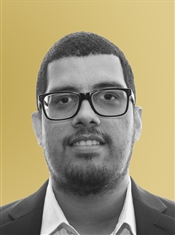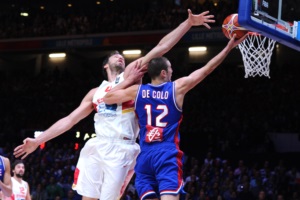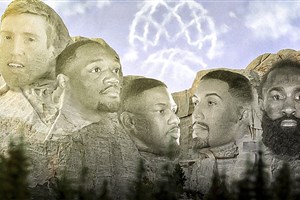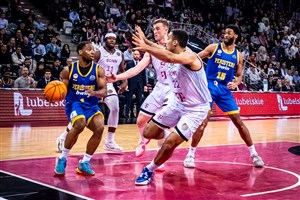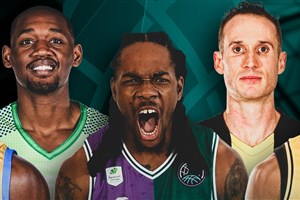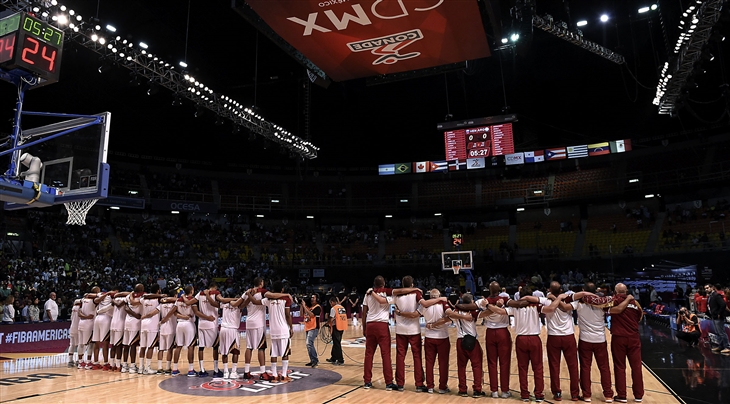
Prep is everything
SAN JUAN (William Rosario's Somewhere in the Americas) - International basketball fans in the Americas are still buzzing about Venezuela’s gold medal run in the FIBA Americas Championship over a month ago. It was more than a surprise. The biggest underdog win in the history of the competition.
When the team beat Canada in the semifinals, excuses and every other kind of coulda shoulda woulda arose; “it was a Canadian meltdown!”, “referee shouldn’t have made that call!”, “Triano should have had Wiggins play more”, “Heissler Guillen went bonkers hitting incredible threes”, “Che Garcia had the perfect gameplan”. But, I tried looking everywhere and “they just had the better pre-tournament preparation” is almost nowhere to be found.
But they did.
Venezuela started this 2015 FIBA Americas Championship process a month before, playing against Angola, Spain, Russia, Macedonia, Serbia, China, Argentina and Mexico previous to the start of the competition. They were competitive against all of them. Almost beat Spain (the eventual Eurobasket champions) in Spain.
“It gave us a sense of what was needed to win at the highest level. It confirmed the intensity we needed put forward on the defensive side of the floor in order to compete. It was a complete confidence booster.”, said point guard Gregory Vargas when interviewed after the semifinal win.
And it is true. Even if they ended up not beating Canada in the semifinals, their performance in the FIBA Americas Championship would have been a great story. The fact that they were competitive and were beautiful in their execution and discipline on both sides of the floor was great enough. The quality of their friendlies schedule made it possible to begin with.
They also arrived in Mexico City, which has a minimum altitude of 2,200 meters (7,200 feet), 12 days before the start of the championship. They were serious.
It was even apparent in their coaching staff. Homework was done and when the tournament began, they were the only team with an oxygen tank in the bench. Two days after, every other team followed. They had made it a priority to be prepared in every possible way to compete in Mexico City.
Así fue la primera jornada de trabajo de la Selección Nacional en México pic.twitter.com/nRrfmrUK82
— FVB (@FVBaloncesto) August 21, 2015
High-risk, high-reward and I think that the Venezuelan national federation, who had organized three major international championships (2012 FIBA Olympic Qualifier, 2013 FIBA Americas Championship and 2014 South American Championship) leading up to this their greatest triumph, have to be given the credit for what they put forward as an investment in their basketball team.
Organizing for a full national team roster and coaching staff to be in the event city 12 days prior to a competition is no soft commitment. This national federation pulled it off and made it work.
Let’s remember this is a team that arrived in Mexico without their three highest-profile players in Grevis Vasquez (Milwaukee Bucks/NBA), Donta Smith (Hapoem Jerusalem/Israel) and big man Gregory Echenique. On paper, they looked like a team with kind-of-a-shot to earn the last spot to the FIBA Olympic Qualifiers next year. Semifinals weren’t in the picture; Finals weren’t even in their dreams. And they ended up winning it all.
They did it with a great defensive performance. All-time great. Only Canada, in their first round matchup, scored over 80 points against them. Teams averaged 70.3 points per game against them.
They also did it with teamwork. Only one player in the roster averaged more than 10 points per game (John Cox, 12.3ppg). Then, there were another five players that averaged 8 points per game or more. In fact, their point guard Heissler Guillen, named to the championship’s All-Star Five, only averaged 8.1 points per game.
Chemistry was the single biggest asset this team had in the competition. Isn’t this what all this preparation gets you?
Now, I want to make another quick closing point about the work that gets put in before a championship starts. I like a national coach that coaches in the country’s national league.
Che Garcia has now been coaching the national team for three summers and Guaros de Lara in Venezuela’s national league for about the same time. He used to coach Boca Jrs. in Argentina, one of the biggest brands in the professional club world. There was a job offer in the country for which he coached the national team and took it. Given it probably paid more money, and that’s at the center of most of these decisions, but he left home to go live in Barquisimeto and coach the city’s professional team. It doesn’t matter how much money you get offered, that’s no easy decision on anybody.
But he went there and I associate these years coaching Guaros as prep. There’s a knowledge of the cultural and idiosyncratic possibilities that a country offers you that cannot be gotten from a month-here-month-there visit. Living in a country, when you coach basketball, lets you get a sense for the reality of the talent and attitudes towards the sport within the country, whether it be by players, coaches, fans and the national federation and governmental structures that end up supporting the national team in the majority of cases.
Helicopter coaches don’t get this. Their assessment of the possibilities that the national team they are coaching give them are always going to end up being superficial compared to the ones that spend months in the day-to-day oxygen that being part of a national league provides.
Che Garcia had this, Sergio Valdeolmillos in 2014 had this (after coaching Halcones de Xalapa in the Mexican national league), and Sergio Hernandez had this (being the winningest coach in the history of the Argentinean national league).
The biggest disappointments in this 2015 FIBA Americas Championship did not (i.e., Kenny Atkinson in Dominican Republic and Rick Pitino in Puerto Rico).
I count this as preparation. Garcia knew the ins and outs and the behavioral tendencies of each player in the Venezuelan national team. He knew when it was time to put the intelligence of captain Jose Vargas on the floor or when to put in the streaky Dwight Lewis for a much-needed offensive jumpstart.
My hope is that national teams in the Americas get this and that every national federation directive understands the power of having the right preparation towards the ultimate goal of winning.
It would elevate the level of basketball in our continent. It would get rid of the result-oriented mindset that produced the hirings of those helicopter coaches, or the annual begging that goes on with players that do not want to play to come suit up for the national team. It would focus the attention on discipline, correct planning and execution.
Sounds like a utopia in this continent, but there’s a team that celebrated in Mexico City that had all of it going for them. In a copy-cat international basketball scene in the Americas...can you all please copy this?
I’ll leave you with a video (sorry that it’s in Spanish!) of the lead characters in said prep:
William Rosario
FIBA
FIBA's columnists write on a wide range of topics relating to basketball that are of interest to them. The opinions they express are their own and in no way reflect those of FIBA.
FIBA takes no responsibility and gives no guarantees, warranties or representations, implied or otherwise, for the content or accuracy of the content and opinion expressed in the above article.
